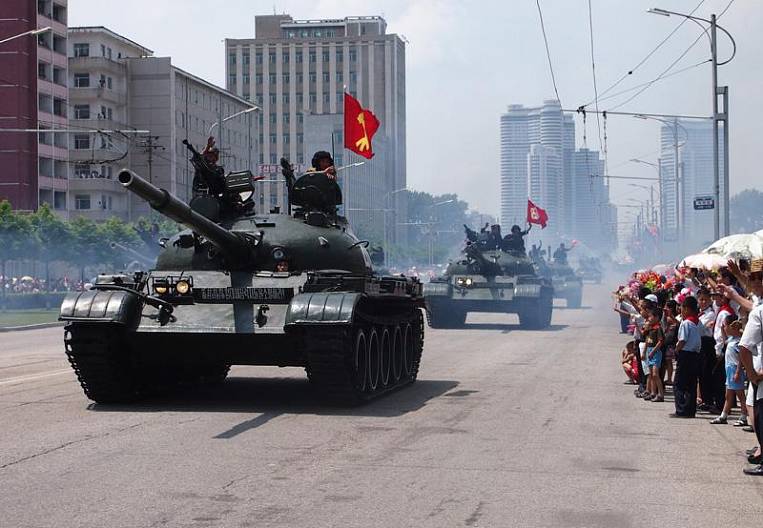
North Korean Hwaseong 14 is a real threat
North Korean Hwaseong 14 is a real threat
The Democratic People's Republic of Korea is making record and alarming progress in developing ballistic missiles. Although engineers from the country of the flying horse Chollim have been engaged in rocket technology for at least 40 years, they had nothing to boast of for the first 30 years, since they managed to only slightly improve the characteristics of one type of “ground” ground, that is, the old Soviet 8K14 missiles, the popular Scuds ". They had no track record of any other class of missiles. Absolutely unconvincing in this context were the threats against neighbors and the United States, repeated by the North Korean media.
Quite unexpectedly, about five years ago, the situation began to change rapidly. The North Koreans have boasted of more and more successful attempts to launch new missiles in the world, which is confirmed by intelligence sources in the Republic of Korea, Japan and the United States. Tested were mainly surface-to-surface missiles, as well as anti-ship and anti-aircraft missiles. Undoubtedly, progress was largely due to the intensification of international contacts. It has long been known that the DPRK is trying to purchase complete missiles of various classes and their launchers from abroad, and is also trying to gain access to missile technology and even trying to attract foreign engineers to cooperate. The obvious destinations for North Korean intelligence were and remain Third World countries, which often bought modern weapons from the USSR, often without real need, although often not able to provide proper maintenance. The second direction is the countries of the former Eastern bloc, although some of them, especially after joining Western structures (NATO and the European Union), took care of controlling the flow of such materials and information. The territory of the former USSR was and partly remains the most promising. If the Russian Federation only for a relatively short time (until the end of the 90s) weakened control over the flow of many key military technologies, then the former republics are still very “liberal” in this matter. However, their resources are very diverse. In some, there was almost no military industry, but there were only armories, in others there were cooperative factories that produced only individual components, and in others, final assembly plants that required supplies from all sides of the once great state. Only in one former republic, almost ready-made shells of various classes were designed and produced. There are many indications that this country was the main target of interest for North Korean intelligence agencies (more on this later).
For the world and the DPRK, the reaction of the PRC authorities to the tests of North Korean missiles and nuclear cargo carried out in defiance of subsequent UN resolutions is extremely important and, probably, even decisive. Immediately after the assassination attempt on August 29, they warned the world against taking decisive steps against the DPRK, and the next day, through the mouth of Foreign Minister Wang Yi, they demanded that third countries abandon any pressure on North Korea, except political, UN approved (which means protracted negotiations with veto power for PRC). This is China's first clear official signal of its full support for the Kim Jong-un regime. This is also a simple explanation for the courage with which the North Korean regime violates UN resolutions and plays on the nose of the whole world. The consequences of this attitude of the PRC were not long in coming - on Sunday, September 3, the Democratic People's Republic of Korea conducted its sixth nuclear weapon test (see box).
The alarm caused by the fact that this test was carried out, especially since a little earlier - 4 (is it not a coincidence of the dates of the US Independence Day ... which would have reached not only the Republic of Korea, Japan and the Pacific Islands, but also all of Australia and Western coast of the continental United States.
A brief overview of its predecessors will be extremely helpful in correctly evaluating North Korea's largest and most advanced ballistic missile.

